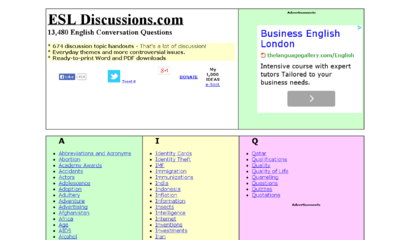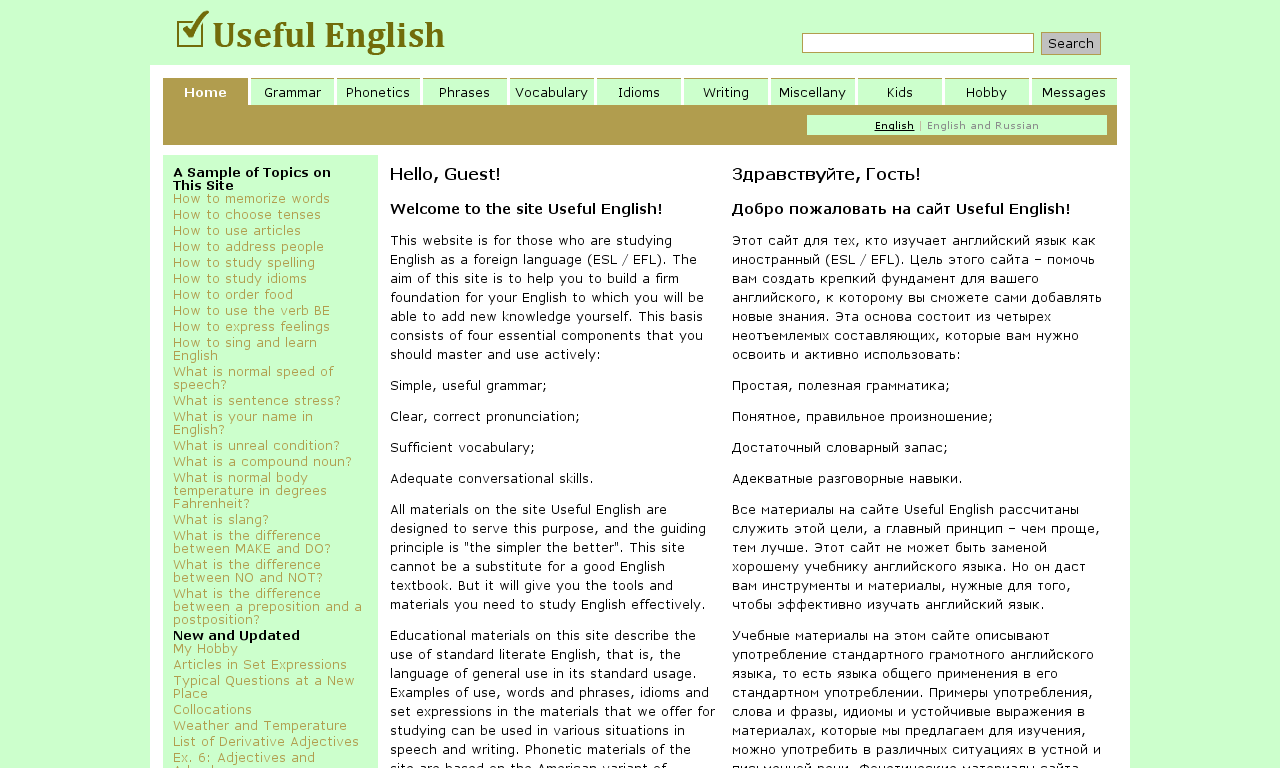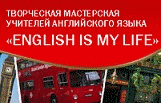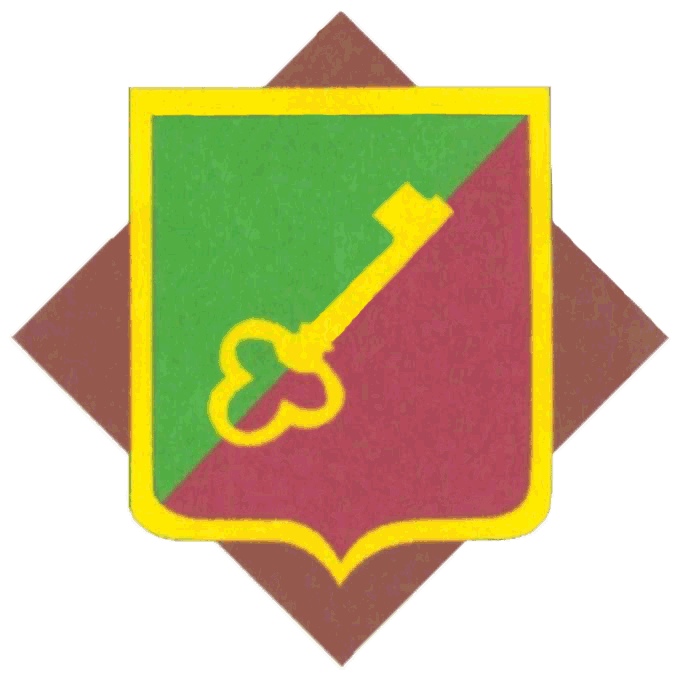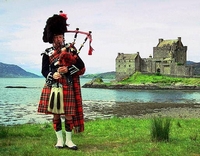 Внеклассное мероприятие по английскому языку
Внеклассное мероприятие по английскому языку
по теме “Welcome to Scotland”
Учитель английского языка Кузнецова О.Н.
ГУО "Гимназия имени И.М. Ерашова г. Лепеля"
Аннотация:
Внеклассное мероприятие по английскому языку по теме «Welcome to Scotland» разработан для учащихся 6 классов гимназии и представлен в виде разработки с применением информационно-коммуникационных технологий (мультимедийной презентации).
Целью создания данного мероприятия является формирование у учащихся навыков познавательной деятельности, расширение представлений об иноязычной культуре, традициях и обычаях англо-говорящей страны, совершенствование умений и навыков практического владения языком, повышение интереса к иностранному языку.
Цели мероприятия:
Учебные: способствовать развитию межкультурной компетенции, совершенствованию знаний учащихся по теме «Шотландия».
Воспитательные: создать условия для осуществления нравственного воспитания учащихся и формирования интереса к иноязычной культуре через культуру родного народа.
Развивающие: способствовать формированию интеллектуальной, эмоциональной и мотивационной сферы личности учащихся.
Задачи:
- познакомить учащихся с обычаями и традициями, символикой Шотландии;
- прививать интерес к иноязычной культуре;
- обобщить лингвострановедческий материал по теме “Шотландия”, углубить и расширить знания по теме;
- совершенствовать умения и навыки практического владения английским языком;
- повысить познавательный интерес к иностранному языку.
Оборудование урока: мультимедийный проектор, мультимедийная презентация, аудиозапись песен “Auld Lang Syne”, “My Bonnie”, видеоролик “Highland games”, буклеты «Welcome to Scotland».
Предварительная подготовка: учитель выбирает 2 ведущих (желательно, чтобы это были учащиеся старших классов), перед началом урока проводится выставка «Шотландия моими глазами», украшается кабинет.
Ход занятия:
I. Вступительная часть.
Pupil 1: Good afternoon, boys and girls, good afternoon our dear quests! We are glad to see you at our meeting today. What date is it tоday? (Слайд 1)
Pupil 2: It is a special day for the people of the United Kingdom of Great Britain and Northern Ireland. Saint Andrew is the Patron Saint of Scotland, and St. Andrew's Day is celebrated by the Scots around the world on the 30th November. Today we’ve come here to learn more about a wonderful country – Scotland. And our meeting is called “Welcome to Scotland”. (Слайд 2)
The aims of our meeting are:
- to revise the facts you have learned about Scotland;
- to enjoy the sights of Scotland;
- to learn more about the history, culture and traditions of this wonderful and mysterious country;
- to show your knowledge of Scotland and its traditions.
- Основная часть.
(В класс заходят 4 ученика в традиционных шотландских юбках). (Слайд 3)
P1: Four Scottish students are our guests today. Let’s meet them. Hello! What are your names? (Jimmy(J), Donald(D), Angus(A), Jane(Ja).
(P2): Nice to meet you.
Guests: Nice to meet you too.
P2: Some guide-books say: “Who hasn’t seen Scotland doesn’t really know Great Britain”. We know Scotland has the second name. How do you call your country at home?
J: The ancient name of Scotland given it by the Romans was Caledonia. Today the name is used in the titles of some hotels and clubs. It is often used in poetry. “O Caledonia! Stern a wild…” wrote Sir Walter Scott.
P1: Is it your first visit to Belarus?
D: Yes, it is.
P2: We hope you’ll have a good time. And now will you tell us about your country?
A: Well, let’s come back to the history of the country.
P1: The year of 1703. That year Scotland and England were united. (Слайд 4)
(На троне восседает король. За его спиной стоит человек с короной в руках, входит глашатай (Herald):
D: By the Grace of God the King of Scotland James the fourth is proclaimed the King of England James the first – Defender of the Faith, Land and People!
(После этих слов на голову королю надевают корону. Раздается троекратное «God save the King! God save the King! God save the King»).
P2: At the beginning of the 18-th century the Scottish Parliament was merged with the English Parliament and Scotland lost its political independence.
P1: But the Scots were proud, independent people and they fought for the independence of their country. (Слайд 5) Prince Charles Edward Stewart, who was known as Bonnie Prince Charlie, fought against the English in the 18th century trying to make Scotland independent. But Charlie’s army was defeated. Charlie was Scottish national hero and people dedicated him a song. (Слайд 6)
Исполнение песни “My bonnie”.
My Bonnie is over the ocean,
My Bonnie is over the sea,
My Bonnie is over the ocean,
O bring back my Bonnie to me…
Chorus:
Bring back, bring back,
Bring back my Bonnie to me, to me.
Bring back, bring back,
O bring back my Bonnie to me.
Oh, blow you winds over the ocean,
Oh, blow you winds over the sea,
Oh, blow you winds over the ocean
And bring back my Bonnie to me.
P2: What can you tell us about today’s Scotland? (Слайд 7)
A: Scotland is the country to the north of England. Its population is more than 5 million people. Its area is 78,772 sq km.
D: The capital of Scotland is Edinburgh. It has been the capital of Scotland since 1437. It is an old city and if you walk around you can touch history at every step. (Слайд 8)
P1: What about the climate?
J: The climate of Scotland is warmer than in Belarus. It often rains in Scotland and Western Scotland, there are usually five rainy days to the week. The average temperature in January is about 4 degrees above zero and the average temperature in July is 14 degrees above zero. (Слайд 9)
Ja: Look at the map and these pictures. Scotland has three main regions: the Border country, the Lowlands and the Highlands – the most beautiful part of the country. The Scottish Highlands are among the oldest mountains in the world. Ben Nevis is the highest mountain in Scotland. (Слайд 10)
P2: We know that a famous Scottish poet Robert Burns dedicated a poem to the Highlands. (Слайд 11)
Стихотворение Р. Бернса «My Heart’s in the Highlands»
A: Robert Burns “My Heart’s in the Highlands”
My heart's in the Highlands, my heart is not here
My heart's in the Highlands a-chasing the deer,
A-chasing the wild deer and following the roe -
My heart's in the Highlands, wherever I go.
Farewell to the Highlands, farewell to the North
The birth-place of valour, the country of worth!
Wherever I wander, wherever I rove,
The hills of the Highlands for ever I love.
Farewell to the mountains high-covered with snow,
Farewell to the straths and green valleys below,
Farewell to the forests and wild hanging woods,
Farewell to the torrents and loud-pouring floods!
My heart's in the Highlands, my heart is not
My heart's in the Highlands a-chasing the deer,
A-chasing the wild deer and following the roe -
My heart's in the Highlands, wherever I go.
P1: Thank you. What are the national symbols of your country?
D: These are the national symbols of Scotland – the flag and the emblem. (Слайд 12)
A: The national flag of Scotland is made up of a white cross on a blue background.
J: The national emblem is a thistle. Everyone in Scotland knows the legend of how the thistle, the national emblem, saved the country in the Middle Ages, when the Scots and Vikings were at war. (Слайд 13)
Ja: At night the Vikings wanted to attack the sleeping Scots and kill them. They took off their boots and crept towards the Scottish army. Suddenly, one of the Vikings stepped on a thistle and gave a loud cry of pain. His cries raised the alarm and the Scots woke up and defeated the Vikings. In gratitude, the plant was made the symbol of Scotland.
Звучат звуки волынки
D: Another well-known symbol is a bagpipe. The Scots play music on the bagpipes. The piper blows air into a bag. He holds this bag under his arm and presses the air into the other pipes. In this way the music never stops. The bagpipes make a very loud sound and you can hear the pipes a long way away. (Слайд 14)
A: We use the pipes on different occasions. You can watch a video of the Highlands Games which are held in summer. They include tossing the caber (a heavy wooden pole), throwing the hammer and other events testing strength, bagpipe music and dancing. (Слайд 15, 16)
Просмотр видеоролика “Highland Games”.
P2: Why are the men wearing skirts? (Слайд 17)
J: The Scottish people are great patriots of their country. We keep our old customs and traditions even if they seem strange to the whole world. We are wearing our national dress. Do you know it?
P2: Of course, we do. It is a kilt.
A: This colorful cloth is called tartan – a woolen cloth with a pattern of lines of different widths and different colours. (Слайд 18)
P1: Sorry, but I’ve heard that there is a monster in one of your lakes? What can you tell us about it?
Ja: Mountain lakes are called “lochs” in Scotland. The most famous and mysterious lake is Loch Ness. It is believed that a monster called “Nessie” lives there. (Слайд 19, 20)
P2: How interesting! We know that today you celebrate St. Andrew’s Day. What do people in Scotland usually do on this day?
D: They buy and fly the National Flag of Scotland, dress in traditional Scottish costumes, try and learn how to play the bagpipes and enjoy Scottish food and drink. (Слайд 21)
P1: Sorry, may I ask a question? The traditional Belarussian meal is “draniki”. What is the traditional dish in Scotland?
A: One of the traditional dishes served on special days is haggis.
P2: How do you cook it?
A: It is a sheep’s maw containing the minced lungs, heart and liver of the sheep, mixed and cooked with oatmeal, onions, pepper, salt and suet. Haggis is eaten with mashed potatoes or turnips. (Слайд 22, 23)
P1: What other interesting traditions do you have? (Слайд 24)
Ja: There are a lot of them in Scotland. For example, on New Year when the clock strikes twelve, everybody stands in a circle crossing their arms and sing “Auld Lang Syne”.
T: Dear guests let’s listen and try to sing this song. (Слайд 25)
(Звучит песня “Auld Lang Syne”, ученики поют вместе).
Should auld acquaintance be forgot,
And never brought to mind’?
Should auld acquaintance be forgot,
And auld lang syne?
Chorus:
And auld lang syne, my dear,
For auld lang syne,
We’ll talk a cup o’ kindness yet.
For auld lang syne!
P2: Thank you very much. We have learnt a lot of new things about your country. Enjoy your visit in Belarus! Good –bye! (Слайд 26, 27)
Guests: Good –bye!
- Подведение итогов.
Teacher: I want to thank our guests and our participants. We’ll remember Scotland as a land of Scotsmen in kilt, playing bagpipes, romantic castles, and a land with its own national forms of dancing, its own songs, poetry and traditions. To put the whole thing in a nutshell, Scotland is not England.
And now I want to check how well you know Scotland and to answer the following questions.
Мультимедийная презентация: quiz (Слайды 28-36)
Teacher: Thank you very much for your work today. Good-bye!

